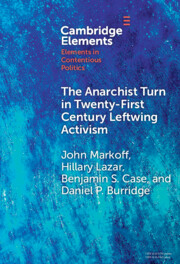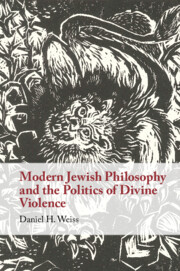Refine search
Actions for selected content:
47 results
Navigating individual and organizational dynamics: Hangzhou first normal school network, Weekly Review editorial board, and the founding of the Chinese Communist Party
-
- Journal:
- International Journal of Asian Studies , First View
- Published online by Cambridge University Press:
- 09 September 2025, pp. 1-16
-
- Article
-
- You have access
- Open access
- HTML
- Export citation
Chapter 11 - Anarchist Media, Cuba’s War for Independence, and the Forging of a Radical Transnational Latinidad, 1880s–1890s
- from Part III - Transgressing
-
-
- Book:
- Latinx Literature in Transition, 1444–1886
- Published online:
- 06 August 2025
- Print publication:
- 17 July 2025, pp 252-270
-
- Chapter
- Export citation
Chapter 3 - The Literature of Radicalism
- from Part I - Concepts
-
-
- Book:
- The Cambridge Companion to Nineteenth-Century American Literature and Politics
- Published online:
- 06 March 2025
- Print publication:
- 13 March 2025, pp 51-66
-
- Chapter
- Export citation
A general extreme value-based Gaussian global navigation satellite systems measurement error distribution for mission-critical applications
-
- Journal:
- The Journal of Navigation / Volume 77 / Issue 5-6 / September 2024
- Published online by Cambridge University Press:
- 26 May 2025, pp. 695-708
- Print publication:
- September 2024
-
- Article
-
- You have access
- Open access
- HTML
- Export citation

The Anarchist Turn in Twenty-First Century Leftwing Activism
-
- Published online:
- 14 March 2024
- Print publication:
- 11 April 2024
-
- Element
- Export citation
Introduction
-
- Book:
- Resisting Racial Capitalism
- Published online:
- 16 November 2023
- Print publication:
- 30 November 2023, pp 1-20
-
- Chapter
- Export citation
3 - Prometheans
-
- Book:
- Red Secularism
- Published online:
- 30 November 2023
- Print publication:
- 30 November 2023, pp 63-88
-
- Chapter
- Export citation
Introduction
-
- Book:
- Social Anarchism and the Rejection of Moral Tyranny
- Published online:
- 19 October 2023
- Print publication:
- 02 November 2023, pp 1-20
-
- Chapter
-
- You have access
- Open access
- HTML
- Export citation
Chapter 1 - Social Anarchism
-
- Book:
- Social Anarchism and the Rejection of Moral Tyranny
- Published online:
- 19 October 2023
- Print publication:
- 02 November 2023, pp 21-67
-
- Chapter
-
- You have access
- Open access
- HTML
- Export citation
Tunis in the Global Radical Web: Diasporas, Transnational Anarchism, and Labor Movements (1887–1912)
-
- Journal:
- International Labor and Working-Class History / Volume 104 / Fall 2023
- Published online by Cambridge University Press:
- 07 September 2023, pp. 164-182
-
- Article
-
- You have access
- Open access
- HTML
- Export citation
5 - What Is a Good Decision?
-
- Book:
- Decisions for Sustainability
- Published online:
- 25 May 2023
- Print publication:
- 08 June 2023, pp 77-97
-
- Chapter
- Export citation
17 - Global Migrations and Social Movements from 1815 to the 1920s
- from Part V - Transnational Politics and International Solidarities
-
-
- Book:
- The Cambridge History of Global Migrations
- Published online:
- 12 May 2023
- Print publication:
- 01 June 2023, pp 360-380
-
- Chapter
- Export citation

Modern Jewish Philosophy and the Politics of Divine Violence
-
- Published online:
- 30 March 2023
- Print publication:
- 06 April 2023
8 - Turgenev’s Portrait of a Nihilist
-
- Book:
- A History of Nihilism in the Nineteenth Century
- Published online:
- 10 March 2023
- Print publication:
- 30 March 2023, pp 237-258
-
- Chapter
- Export citation
5 - Transatlantic Radicalism and the Land Question
-
- Book:
- Land and Liberalism
- Published online:
- 02 March 2023
- Print publication:
- 09 March 2023, pp 153-187
-
- Chapter
- Export citation
Chapter 4 - Black in Character as in Complexion
-
- Book:
- Honor, Romanticism, and the Hidden Value of Modernity
- Published online:
- 23 February 2023
- Print publication:
- 19 January 2023, pp 106-133
-
- Chapter
- Export citation
Authority, Plurality, and Anarchist Scepticism
-
- Journal:
- Dialogue: Canadian Philosophical Review / Revue canadienne de philosophie / Volume 62 / Issue 2 / August 2023
- Published online by Cambridge University Press:
- 14 December 2022, pp. 395-412
-
- Article
-
- You have access
- Open access
- HTML
- Export citation
Chapter 12 - Anarchisms
- from Part III - Uprisings
-
-
- Book:
- Latin American Literature in Transition 1870–1930
- Published online:
- 14 January 2023
- Print publication:
- 08 December 2022, pp 179-193
-
- Chapter
- Export citation
Chapter 8 - Muscle, Blood, and Steel
-
- Book:
- American Song and Struggle from Columbus to World War 2
- Published online:
- 30 July 2022
- Print publication:
- 18 August 2022, pp 150-173
-
- Chapter
- Export citation
Against Irrationalism in the Theory of Propaganda
-
- Journal:
- Journal of the American Philosophical Association / Volume 9 / Issue 2 / June 2023
- Published online by Cambridge University Press:
- 28 July 2022, pp. 303-317
-
- Article
- Export citation
